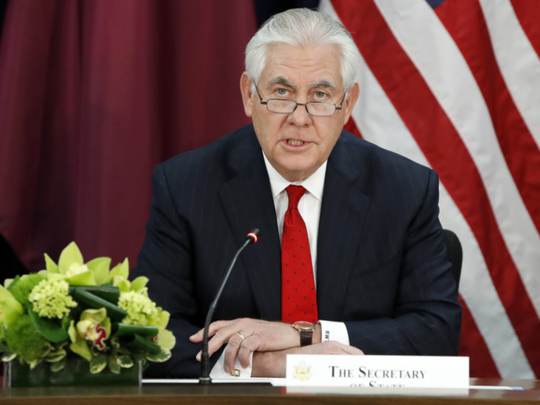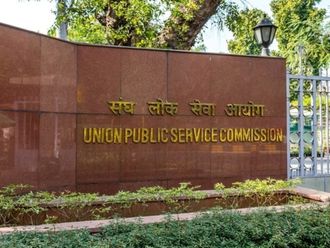
In a speech at Stanford recently, United States Secretary of State Rex Tillerson outlined “the way forward” for America in Syria. He announced that the US military would have an open-ended presence inside the country and envisioned a Syria free of Daesh (the self-proclaimed Islamic State of Iraq and the Levant), Al Qaida, Iran, weapons of mass destruction and Syrian President Bashar Al Assad. He also laid out a “new” strategy to achieve all this: Buttressed by its military, the US will expend diplomatic energy on stabilisation programmes and the United Nations-led political process.
But nearly seven years after the Syrian uprising and civil war first erupted, the US has yet to play more than a marginal role in the Syria story. New rhetoric from the US State Department won’t put America on a new track.
When he was in office, former US president Barack Obama limited military support for Syria’s Arab rebels, opted against targeting Al Assad’s forces, engaged militarily only with Daesh and ultimately provided some support for the Kurdish rebels.
Under President Donald Trump, the level of US involvement has stayed more or less steady. Trump ended a CIA programme supporting rebels, lobbed bombs at a Syrian air base in a one-off and has focused the fight on Daesh. He also bolstered Kurdish rebels fighting under the umbrella of the Syrian Democratic Forces, arming and leading them in their effort to drive Daesh out of Raqqa. Russia did the same for Al Assad’s forces in Deir Al Zour, and Daesh has now been pushed out of Syria’s northeast.
Now the US State Department and the Agency for International Development are undertaking a massive stabilisation effort in the northeast, in cooperation with US military. They are rebuilding infrastructure, extending services like water and electricity and creating local councils to undertake governance.
While this may seem like a significant commitment, the desert region is scarcely inhabited compared with the west and south, where 80 per cent of the Syrian population lived before the conflict broke out. In its attempts to foster local leadership, the US is clumsily balancing between Arab inhabitants and the well-organised Kurds, who liberated the area from Daesh. In the process, the US is snubbing the Turkish government, which presides over a statelet in northern Aleppo and has recently launched a military incursion against America’s Kurdish allies in the northwest. The US is also avoiding Al Assad’s government, which, assisted by Russia and Iran, has been recapturing territory across the country and is likely to take control of the northeast.
There is potential for the US to oversee a settlement between the Kurds and the central government, but Tillerson has not indicated if he will usher in any such process. So far, the US has been party to only one ceasefire, in Syria’s south.
Meanwhile, supposed “de-escalation zones” in central and northwestern Syria remain hot spots. In Idlib, the only Syrian governorate that rebels control, the militant group and former Al Qaida affiliate Hayat Tahrir Al Sham is taking over, pushing out civilian and military elements of the more moderate Syrian opposition. Lately, Al Assad’s forces have made inroads in Idlib, displacing hundreds of thousands. Russia and Iran have some sway over Al Assad, while Turkey has influence on some of the rebels. But the US has no pull in that region or the other such zones.
There have been two different sets of negotiations on Syria. Russia, Turkey and Iran have presided over talks in Astana, Kazakhstan. Besides creating the de-escalation zones, the Astana talks may serve only to keep government and opposition delegates organised and prepared for other negotiations. The US is merely an observer at these talks.
Then there are the United Nations-led negotiations in Geneva. The US has participated in all eight rounds of the UN talks, but it hasn’t taken on a leadership role, and so far the talks haven’t yielded anything concrete. It’s unclear what Tillerson’s renewed commitment to the ongoing process would mean, if anything.
The UN-led process aims to implement Resolution 2254, which calls for UN-supervised elections and constitutional reforms. But since 1945, only one-quarter of more than 100 civil wars have ended in a negotiated settlement. Most of the time, one party militarily defeats the others.
Al Assad now has control over all of Syria’s major population centres, where reconstruction contracts are already being forged. He has refused to concede that he is fighting anything, but a war on terrorism. And he retains more popular support in Syria than the West has been willing to acknowledge.
Tillerson may envision a Syria free of violence, one to which refugees and displaced people could return. But the US is doing little to make it so.
— Los Angeles Times
Rana B. Khoury is a doctoral candidate in political science at Northwestern University.








